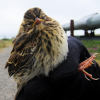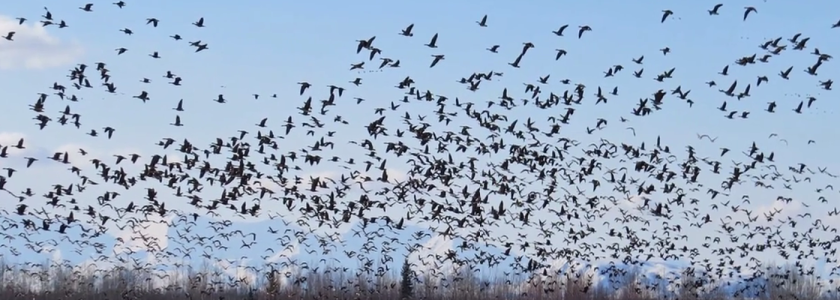Bugs Feed Birds
“I study bugs on the tundra. I used to think I wouldn’t study bugs; I thought maybe I would study birds or something cute like that. And I remember I had an entomology class as an undergraduate. My entomology teacher would make fun of me and ask what bugs those birds were eating as if that was the real, important question. And he turned out to be right.” – Ashley Asmus
Bugs Feed Birds
Bugs Feed Birds entomology field science Alaska
Ashley Asmus of the University of Texas at Arlington visits Toolik Field Station in Alaska to collect and document the insect explosion that provides a vital buffet for migratory birds. If the reverse leaf blower she uses to collect bugs surprises you, so will the variety and quantity of insect life.
While vacuum sampling, Asmus braves a ferocious cloud of mosquitoes and midges. She also uses pitfall traps and sweep netting to snag Alaskan bugs. “Those are all methods that we are using to track how much bug biomass is available to eat [by predators] such as birds and also what kind of bug community lives on the tundra, especially on different types of tundra habitats,” Asmus explained.
Asmus is an entomologist. Entomologists, scientists who study insects, use a special microscope that’s able to measure a bug’s size digitally. Then, they apply special equations that relate a specific species’ size to its mass.

Bugs Feed Birds video | Frontier Scientists on Youtube
(Bugs Feed Birds entomology field science Alaska)
Frontier Scientists: presenting scientific discovery in the Arctic and beyond
Related Videos
Project Summary

Migration
Avian Migration — Alaska is a hotspot for migratory birds which come to the state seeking breeding grounds with plentiful food and few predators. Life isn’t easy for these far-flyers. Scientists with the University of California Davis' Birds and Seasonality Project work to understand how migratory songbird species have adapted their... Read More >



